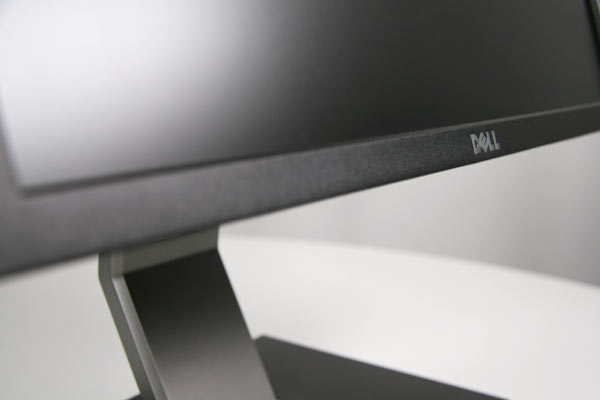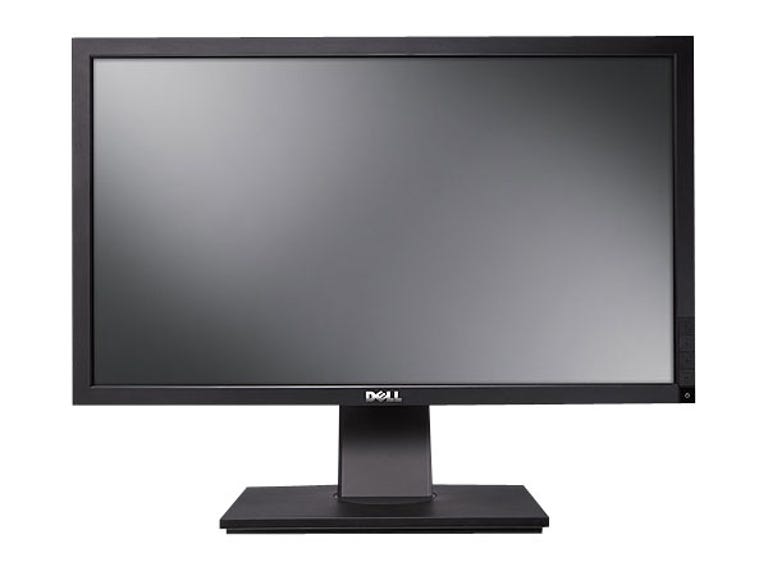 Why You Can Trust CNET
Why You Can Trust CNET Dell UltraSharp U2311H review: Dell UltraSharp U2311H
Considering its price, no one has an excuse any more to buy a second-rate TN panel. While it hasn't been given the same attention to detail in colour accuracy as the 2209WA or the U2711, the U2311H makes for a compelling buy if you want affordable 1080p.
The Dell U2311H is yet another entry into Dell's UltraSharp range, its trademark look and feel of matte black and silver in place. What it is missing from other models though is the silver trim around the edge — the panel is now completely black.
The Good
The Bad
The Bottom Line
It's a 23-inch, 1920x1080, matte screen that despite using an IPS panel comes in at the low price of AU$349 — a good AU$50 cheaper than its smaller, lower resolution cousin the 2209WA. It also one ups the 22-inch alternative by including a DisplayPort output.
The aesthetic adheres to what seems to be Dell's universal style now — square and military-like, in black and silver. Thankfully it's something that works, even if it can make the screens hard to tell apart at a glance. Perhaps at Dell it really is size that matters the most.

Dell has definitely settled on a design. (Credit: Craig Simms/CBS Interactive)
| Size | 23 inches |
|---|---|
| Resolution | 1920x1080 |
| Aspect ratio | 16:9 |
| Pixel pitch | 0.265 |
| Panel technology | H-IPS |
| Viewing angles (10:1 contrast) | H: 178° V: 178° |
| Response time | 8ms G2G |
| Max vertical refresh | 60Hz |
| Connections | DVI, DisplayPort, VGA, soundbar power, 4x USB |
| Accessories | DVI, VGA, DisplayPort, USB upstream, power cables |
The U2311H's stand carries on Dell's long tradition of great adjustability. Rack and pinion height adjustment, swivel, tilt and 90° pivot are all featured. Cable management is offered through a hole in the neck, and the panel itself can be detached if need be.
The Dell stand offers some of the best manoeuvrability in its class.
(Credit: Craig Simms/CBS Interactive)
Power, soundbar power, DisplayPort, DVI, VGA, USB upstream, 2x USB downstream. (Credit: Craig Simms/CBS Interactive)
Two more USB ports are on the left-hand side of the monitor. (Credit: Craig Simms/CBS Interactive)
Buttons and on-screen display (OSD)
While the buttons on the U2311H may mimic its bigger cousin the U2711, the buttons are neither touch nor proximity sensitive, the power light glows a permanent blue. There are four unmarked buttons above this — hit any one and a context-sensitive menu appears, allocating functions to each button where appropriate. Dell's button and menu system are still class leading, and can be used equally as easily in light as in dark.
The unmarked buttons are context sensitive, and physically actuated. (Credit: Craig Simms/CBS Interactive)
It's been around for a little while now, but Dell's OSD is still one of the best on the market. (Credit: Craig Simms/CBS Interactive)
The menu is everything we've come to expect of Dell, although being an entry-level priced monitor, options are limited on the U2311H. The standards are of course here — brightness, contrast, sharpness, RGB/YPbPr colour, a selection between PC or Mac gamma, a mode selection of Graphics or Video and 4:3 or "Fill" image scaling. Just like the 2209WA, you won't find a 1:1 scaling option here, something we're sorely disappointed with.
There is the usual slew of presets too, including "Standard", "Multimedia", "Game", "Warm", "Cool" and "Custom (RGB)" under the Graphics mode, and "Movie", "Game", "Sports" and "Nature" under the Video mode. Video mode also opens up Hue and Saturation settings, but as usual we recommend you leave the presets alone, set it to "Custom (RGB)" and calibrate from there.
Lagom.nl LCD tests
After calibrating to a target brightness of 140cd/m² with an X-Rite i1Display 2, Eye-One Match 3 and tweaking with HCFR, the U2311H was run through the Lagom.nl LCD tests.
| Image tests | |||||
|---|---|---|---|---|---|
| Contrast | Sharpness | Gamma | Black level | White saturation | Gradient |
| Pass | Too sharp. Set at 40 was the best result. | Pass | Pass | Pass | Obvious transition from light to dark. |
Sharpness was an issue — while in day-to-day use we didn't notice anything, with the available settings the monitor would not pass the Lagom sharpness test. There was also a noticeable jump between the dark and light end of the greyscale gradient tests.
| Inversion pixel walk tests | ||||||||||
|---|---|---|---|---|---|---|---|---|---|---|
| Test 1 | Test 2a | Test 2b | Test 3 | Test 4a | Test 4b | Test 5 | Test 6a | Test 6b | Test 7a | Test 7b |
| Pass | Slight flicker | Pass | Pass | Flicker | Slight flicker | Pass | Pass | Pass | Very slight downward scrolling motion | Very slight downward scrolling motion |
While it's not unusual for a monitor to fail up to four of these tests, the U2311H stumbles on five, more than what we're used to seeing.
Input lag
Measured against a Samsung SyncMaster 975p CRT, and using a Canon 40D set to a shutter speed of 1/320, an average of over 60 photographs were taken using StoppUhr as the virtual stopwatch of choice. The U2311H was on average 16.15ms behind, or one frame.
Colour accuracy
ΔE is the measurement of how far a measured colour deviates from its expected value, allowing us to determine the colour accuracy of a monitor. While a ΔE value of 1 is considered perceivable, as long as it's less than 3 the shift shouldn't be too obvious. HCFR was used to determine ΔE for the monitor.
| Measured levels (sRGB mode) | |
|---|---|
| Contrast ratio | 1088:1 |
| Black level (cd/m²) | 0.27 |
| White level (cd/m²) | 293.82 |
| Gamma | 2.15 |
| Greyscale ΔE | ||||||||||
|---|---|---|---|---|---|---|---|---|---|---|
| 0% | 10% | 20% | 30% | 40% | 50% | 60% | 70% | 80% | 90% | 100% |
| 44.4 | 15.2 | 14.6 | 15.8 | 16.5 | 15.9 | 16.2 | 15.9 | 15.3 | 14.1 | 13.0 |
| Colour ΔE (compared to sRGB) | |||||
|---|---|---|---|---|---|
| Red | Green | Blue | Yellow | Cyan | Magenta |
| 6.9 | 4.4 | 10.5 | 4.2 | 12.4 | 18.1 |
Out of the box the U2311H isn't as tightly tuned as the 2209WA or U2711H. (Screenshot by CBS Interactive)
We only have control over RGB values here, so we can't shift the secondaries to help us make colours more accurate — we're going to have to console ourselves with just trying to get better greys.
| Measured levels | |
|---|---|
| Contrast ratio | 776:1 |
| Black level (cd/m²) | 0.18 |
| White level (cd/m²) | 139.67 |
| Gamma (target 2.2) | 2.20 |
| Greyscale ΔE | ||||||||||
|---|---|---|---|---|---|---|---|---|---|---|
| 0% | 10% | 20% | 30% | 40% | 50% | 60% | 70% | 80% | 90% | 100% |
| 46.2 | 8.2 | 0.7 | 2.0 | 0.6 | 1.2 | 0.6 | 0.7 | 1.2 | 1.1 | 0.6 |
| Colour ΔE (compared to Adobe RGB) | |||||
|---|---|---|---|---|---|
| Red | Green | Blue | Yellow | Cyan | Magenta |
| 7.4 | 4.0 | 11.2 | 7.3 | 3.2 | 13.2 |
The calibrated CIE chart. (Screenshot by CBS Interactive)
Our greys are much better — shame we can't screw down those primaries and secondaries a little more, but for the price this monitor goes for, we don't expect that extra functionality.
Viewing angles
Viewing angles were taken with a Canon 40D in spot metering mode, with only shutter time adjusted to obtain a good exposure.
As an IPS panel, the U2311H has excellent viewing angles. (Credit: Craig Simms/CBS Interactive)
Backlight uniformity
Backlight uniformity was measured by placing HCFR into free measure mode, displaying a completely white image and recording the brightness along a 5x3 grid on the screen. This should be considered a guide only, as backlight uniformity is likely to change from unit to unit.
Not much to see here, move along. (Credit: Craig Simms/CBS Interactive)
Light bleed
While no light bleed was present, the U2311H suffers from the IPS "white glow" effect on a dark screen.
It's important to note that the effects of light bleed will likely change from monitor to monitor, regardless of make.
Power consumption
We measured power consumption using a Jaycar mains digital power meter. It's important to note here that due to limitations of the meter, measurements are limited to values 1W and greater, and are reported in 1W increments.
All measurements, screen brightness and contrast were set to 100 per cent, and a test image displayed.
| Juice Box |  |
|---|---|
| Maximum power draw | 35W |
| Power-saving mode | <1W< td=""> |
| Off | <1W< td=""> |
It may not be the most frugal monitor we've used, but those power saving and off modes are exactly as they should be. Often monitors still draw power even when off.
Dell offers a three-year warranty that can be upgraded to a four-year warranty for AU$27.50, or five years for AU$46.20. This includes next-business-day exchange.
Dell's dead pixel policy alters depending on what monitor you have bought. For the U2311H, you'll only need one bright subpixel to get a swap out; but if you have a dark pixel, you'll have to wait for another five to be eligible for a swap over. You are able to return any monitor within 15 days of the invoice date to Dell; however, the user pays shipping in this instance.
Considering its price, no one has an excuse any more to buy a second-rate TN panel. While it hasn't been given the same attention to detail in colour accuracy as the 2209WA or the U2711, the U2311H makes for a compelling buy if you want affordable 1080p.


